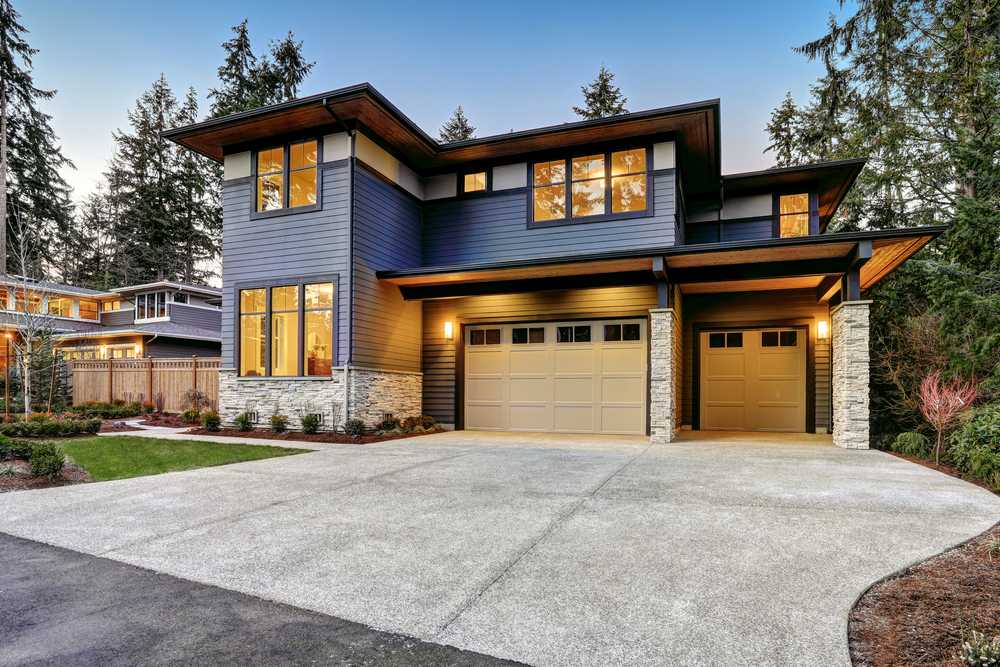Your home’s exterior siding does much more than give it a polished look. It serves as a crucial barrier against the elements, insulating your home and contributing to its overall energy efficiency. But how do you know when it’s time to replace your residential siding? Our team at Arrow Exterior Designs is here to help you identify key signs and understand why timely replacement is essential.
Understanding the Role of Residential Siding
Residential siding plays a critical role in protecting your home from various weather conditions such as rain, wind, and UV rays. Good quality siding acts as a shield, keeping moisture out while preventing wind damage.
Without adequate protection, your home’s structural integrity can be compromised. Over time, exposure to these elements can lead to more severe issues, including rot and mold growth. Therefore, maintaining your siding is crucial to safeguarding your home.
Signs It’s Time to Replace Your Siding
Visible Damage
One of the most apparent signs that you need to replace your residential siding is visible damage. This includes cracks, holes, and warping, which can compromise the siding’s effectiveness.
When your siding is visibly damaged, it loses its ability to protect your home from the elements. Over time, these small issues can escalate into significant problems, including structural damage and increased energy bills.
Rotting or Mold Growth
Rotting or mold growth is another clear indication that your siding needs to be replaced. These issues often stem from prolonged moisture exposure and can lead to more severe health and structural problems.
Mold may lead to respiratory problems and other health issues for your family. Furthermore, rot can compromise the structural integrity of your home, underscoring the importance of quickly tackling these concerns.
Persistent Maintenance Issues
If you’re always painting or fixing your siding, it might be a sign to get an upgrade. Regular maintenance can eat up time and money.
High maintenance costs and the inconvenience of constant repairs make replacement a more practical and long-term solution. Newer siding materials require less upkeep and provide better protection.
Water Damage
Water stains or marks on interior walls can indicate that your siding is failing to keep moisture out. This internal damage is often a sign that your siding needs replacing.
Ignoring water damage can lead to more extensive and costly repairs down the line. Addressing the issue promptly can save you money and prevent further damage to your home.
Peeling paint or wallpaper inside your home can be another sign of siding failure. This usually occurs when moisture seeps through the siding and affects your interior walls.
This damage not only impacts your home’s aesthetics but also signals a bigger issue with your siding’s ability to protect your home. Replacing your siding can resolve this problem and restore your home’s interior.
Aging and Wear
Different siding materials have varying lifespans. For instance, vinyl siding typically lasts 20-40 years, while wood siding may only last 15-30 years, depending on maintenance.
Understanding the lifespan of your siding material enables you to predict when replacement may be necessary. Conducting regular inspections allows you to identify issues promptly and prepare for a timely replacement.
Energy Efficiency Concerns
A telltale indication that it might be time to replace your siding is a sudden surge in energy expenses. Inadequate insulation can lead to heightened strain on your heating and cooling units, ultimately escalating your utility bills.
Replacing old residential siding with energy-efficient options can help lower your bills. Improved insulation ensures that your home maintains a consistent temperature while also reducing the strain on your HVAC system.
If you notice drafts or uneven temperatures in your home, it could be due to failing residential siding. New siding can eliminate drafts and ensure even temperatures throughout your home. This not only improves comfort but also enhances energy efficiency.
Mold, Mildew, and Fungus Growth
Mold and mildew growth on siding is a clear sign of moisture problems. Look for discoloration, spots, or a musty smell around your home’s exterior.
Early detection of mold can prevent more severe health and structural issues. Regular inspections and timely residential siding replacements can keep your home safe and sound.
High Utility Bills
Old, deteriorating siding can lead to increased energy costs. Poor insulation forces your HVAC system to work harder, resulting in higher bills.
Replacing old siding with modern, energy-efficient options can help reduce these costs. Improved insulation keeps your home comfortable and energy bills low.
Interior Wall Damage
Siding problems can directly affect your home’s interior walls. Moisture seeping through damaged siding can cause peeling paint, bubbling wallpaper, and more.
Addressing siding issues promptly can prevent further interior damage. Replacing failing siding ensures that your home’s interior remains protected and aesthetically pleasing.
Look for signs of siding issues inside your home, such as peeling paint, bubbling wallpaper, or water stains. These indicators often point to underlying problems with your exterior siding.

Importance of Timely Siding Replacement to Prevent Further Damage
Replacing damaged siding promptly is crucial to preventing further damage to your home. Timely replacement protects both your exterior and interior from moisture and other issues.
Proactive siding maintenance and replacement can save you money and hassle. It ensures that your home remains in excellent condition, both inside and out.
Desire for an Updated Look
New residential siding can dramatically enhance your home’s curb appeal. It provides a fresh, updated look that can make your home stand out in the neighborhood.
Choosing modern siding options can give your home a contemporary, stylish appearance. It’s a simple yet effective way to boost your home’s visual appeal.
Impact of New Siding on Property Value
New siding can significantly increase your property value. A well-maintained exterior is a critical factor for potential buyers and can boost your home’s marketability.
Investing in high-quality siding is a smart way to enhance your home’s value. It’s an improvement that offers both aesthetic and financial benefits.
Selling Your Home
Fresh siding can make your home more attractive to potential buyers. Demonstrating diligent upkeep and attention, the property’s condition can impact purchasing choices.
Replacing old siding before selling can help you achieve a quicker sale. It enhances your home’s overall appeal and marketability.
Contact Our Team Today
For expert advice and high-quality siding solutions, contact our team at Arrow Exterior Designs in Madison, WI. We’re here to help you make the best choices for your home. Call us today at (608) 283-9039 to request a free estimate and take the first step toward a more beautiful, efficient, and valuable home.



